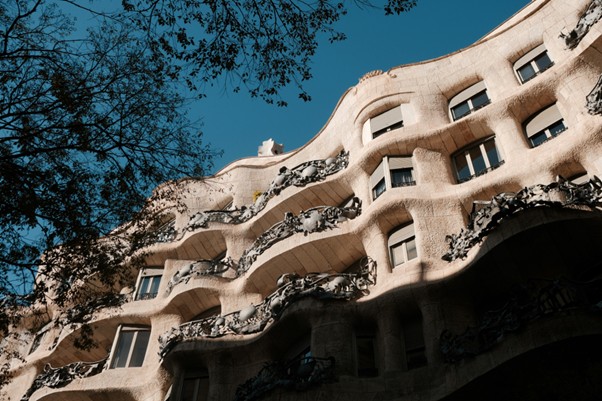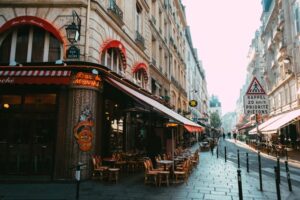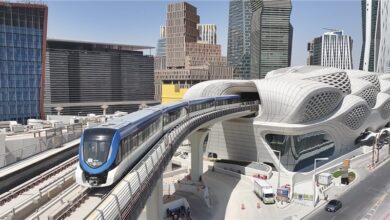Architectural Marvels: From Gaudí’s Creations to Venetian Canals

There’s something magical about arriving in a European city and looking up. Stone, colour, curves, and spires—each city wears its history proudly in the form of architecture that’s far more than just bricks and mortar. It’s personality. It’s passion. It’s a legacy.
Few places capture this better than Barcelona, Paris, and Venice—three cities that feel like open-air galleries where the streets themselves are the exhibits. From Gaudí’s surreal shapes to Parisian elegance and Venice’s water-laced wonder, these destinations each tell their own story in arches, balconies, and rooftops.
Luckily, exploring them isn’t just for architectural scholars or design enthusiasts. And with comfortable train routes connecting each city that whisk you from Spain’s sun to France’s charm—the journey itself becomes part of the experience.
Barcelona: Where Buildings Breathe and Walls Dance
Exploring the streets of Barcelona is like slipping into a vivid daydream, where every corner reveals something unexpected and full of wonder. And that’s largely thanks to one man: Antoni Gaudí.
His work doesn’t just stand out—it lives. The Sagrada Família, still being built over a century after its foundations were laid, towers above the city with a quiet, almost sacred presence. Step inside, and you’re not just in a church—you’re in a forest of stone, where sunlight filters through stained glass like it’s shining through leaves.
But it’s not just one building. Park Güell invites you to play—curving benches, mosaic dragons, vibrant tiles. Casa Batlló draws the eye with its unusual shapes—balconies that resemble bones or helmets, and a tiled roof that twists and coils like something organic, almost alive. Gaudí never followed rules—he followed nature, colour, movement. And in doing so, he gave Barcelona a soul that never sits still.
Many travellers start their journey here and head north, with Barcelona to Paris train tickets in hand, trading Catalan colour for French charm—but the memory of Gaudí always lingers, like a piece of a dream you never quite want to wake up from.
Paris: Grand Boulevards and Quiet Corners
And then there’s Paris. Elegant, poetic, endlessly photogenic.
Where Barcelona surprises, Paris soothes. Its architecture is confident, balanced, and beautifully curated. Walk along the Seine and you’ll spot the gothic silhouettes of Notre-Dame, the delicate iron lace of the Eiffel Tower, and the pristine order of Haussmann’s 19th-century buildings lining the streets with uniform grace.
But Paris isn’t just about the big names. Sometimes, it’s the tiny courtyards tucked behind creaky doors, the narrow staircases in Montmartre, or the sudden appearance of a modern glass structure in an old stone square that catch your breath.
It’s this blend of the old and new, the grand and the intimate, that makes Paris such a joy to explore. And when it’s time to leave? The journey continues east, with the Paris to Venice train offering one of the most picturesque routes in Europe. Through mountains, vineyards, and valleys, you roll towards the next fairytale.

Venice: Floating Through Centuries
And then, suddenly, you’re in Venice.
You step off the train, and there’s no car, no tram, no metro. Just water. And silence, broken only by the echo of footsteps on stone or the soft splash of oars.
Venice doesn’t show off—it enchants. Its architecture is faded and fragile, but all the more beautiful for it. Marble palaces teeter at the edge of canals, their façades kissed by centuries of sea air. Churches gleam with mosaics and gold, and bridges curve gracefully over narrow waterways.
There’s no rush here. Everything asks you to slow down. To notice the details: a carved lion’s head on a crumbling wall, the way laundry hangs between centuries-old windows, or how the colours of buildings shift with the changing light.
You don’t just look at architecture in Venice—you float through it. It surrounds you, whispers to you, reflects in the water beneath your feet.
The Joy of the Journey
One of the loveliest things about travelling through Europe is that you don’t need to fly to see the best of it. Trains glide through landscapes you’d never see from the sky—green hills, sleepy towns, snow-capped peaks, golden fields at sunset.
Taking the Barcelona to Paris train means you can watch the scenery slowly change, feel the shift in culture, language, and architecture without skipping a beat.
Likewise, the train from Paris to Venice is more than just a way to get from A to B. It’s part of the trip. There’s something deeply relaxing about sipping coffee at a train window while you watch the Alps roll by, knowing that a new city—and a new story—is waiting for you at the other end.
So Much More Than Buildings
What makes architecture so powerful is that it’s not just about design—it’s about people. It’s about the dreams of those who built, the lives of those who lived, and the stories those buildings still tell.
In Barcelona, architecture sings with creativity. In Paris, it speaks of elegance and order. And in Venice, it hums with poetry and time. Each city offers not just sights, but feelings. A sense of place. A glimpse into the human spirit, expressed in glass, stone, and wood.
A Few Tips Before You Go
If you’re planning this kind of trip, booking train tickets in advance is a smart move. Tickets often get snapped up during peak season, and for a good reason—those mountain views are unforgettable.
And when you’re in each city, don’t just stick to the big attractions. Take a walk with no map. Follow the sound of street music or the smell of fresh bread. Look up—you’ll notice something you’d never have seen if you’d rushed.
Because Europe’s architecture isn’t just in the monuments—it’s in the details. The balconies with flower pots. The doors with peeling paint. The window where someone once leaned out, watching the world go by.
From one dream to the next, one building to another, this is a journey through Europe’s architectural heart—and a reminder of just how much beauty the world has to offer, if you simply stop and look.



